Discovering Udon: Japan’s Delicious Noodles
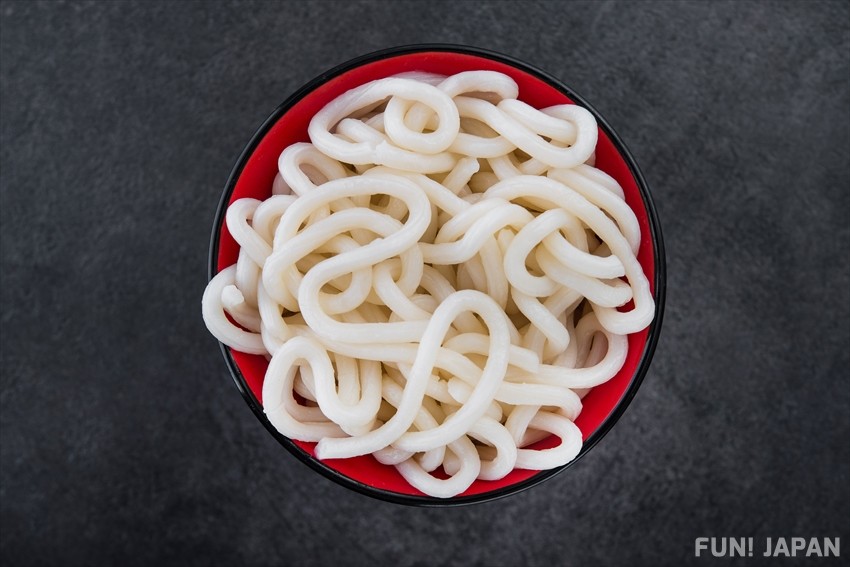
Udon are one of Japan’s most popular noodles and are comfort food for many, but outside of Japan they’re not quite so well known. Whether it’s in a warming soup or grilled with soy sauce and veg, udon are a filling meal you’ll soon come to love in their myriad forms.
What is Udon?
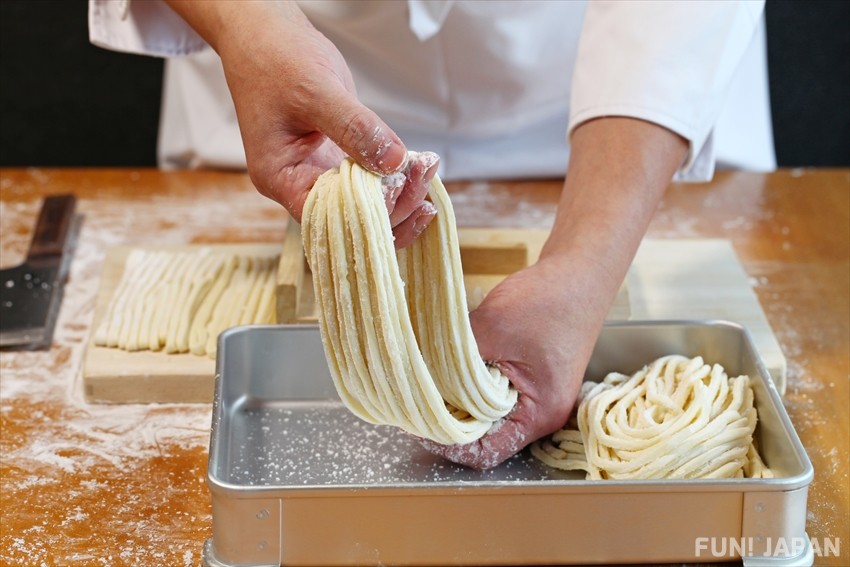
Udon are thick, chewy noodles made using wheat flour and are a firm favourite in Japanese cuisine. Their white colour and smooth texture makes them easy to spot when compared to soba (buckwheat flour) or ramen noodles, although they can vary in thickness. The practice of flour-milling is thought to have been introduced from China sometime between the 10th - 13th centuries, and udon were eaten as a substitute during periods when rice wasn’t available.
Different Udon Dishes
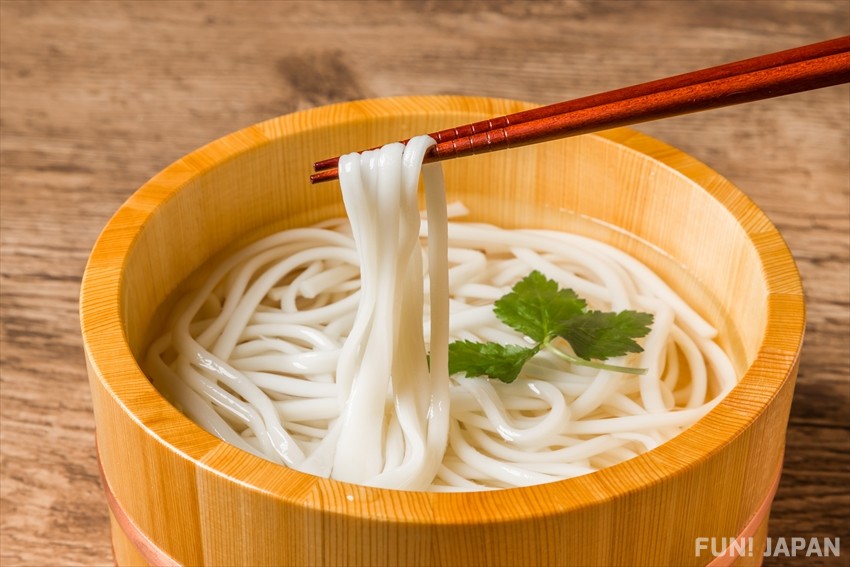
Thanks to their sturdy nature, udon can be served in broths, but are also great for stir-frying or grilling. They are commonly eaten cold in summer and hot in winter, with a wide variety of toppings used to create different dishes.
Kake Udon (hot)
This is the most simple form of hot noodles, featuring freshly cooked udon noodles in a steaming tsuyu broth. The mild soup is light and usually finished at the end using a special spoon. The dish is often sprinkled with green onion, sometimes crispy tempura bits and often with ginger.
Zaru Udon (cold)
The basic style of cold udon, zaru is named after the bamboo draining mat they are served on, similar to the zaru soba dish. The noodles are served with a dipping sauce and while they may be sprinkled with green onion or shredded nori (seaweed) and grated ginger, they are kept relatively simple.
Kamaage Udon (hot)
Unusually, kamaage udon are served in their cooking water, often in large wooden tubs. Portions can be individual or grouped together for families to share. There is often a dipping sauce to go with it, along with toppings options to be added to smaller bowls before eating.
Curry Udon (hot)
A winter favourite, curry udon is a deeply comforting dish that replaces the lighter broth with a Japanese curry sauce. The curry sauce is generally thinned with tsuyu (the noodle dipping broth) to make it more soup-like and is cooked together with the noodles.
Nabeyaki Udon (hot)
For this dish, the udon are cooked in a nabe pot (like a hotpot) along with vegetables and other ingredients such as eggs. This is also a popular winter dish and uses a light broth that is topped up with new ingredients throughout the meal.
Yaki Udon
Yaki udon are a step away from the other dishes as the noodles are fried in a pan or on a griddle. A popular festival food, it’s also served in teppanyaki restaurants (Japanese grills) and at izakaya (Japanese bars) as the salty soy-sauce coating makes it a delicious snack.
Different Toppings for Udon
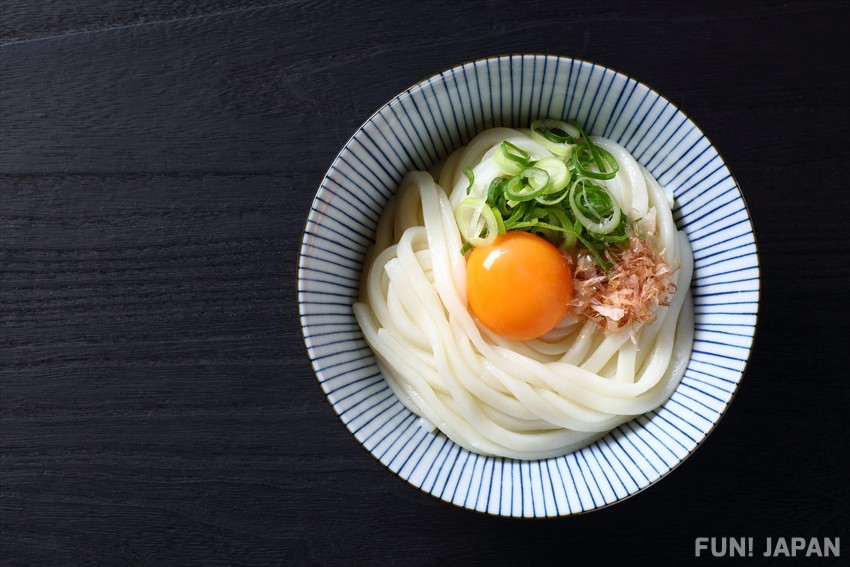
As well as the serving method, the ingredients added to udon can change the meal entirely. While many of the toppings are similar to those served with soba, they can often take on a different flavour and texture when eaten with udon. Some of the common toppings include tempura, kakiage (a fritter) or kameboko (fish paste cake).
Tsukimi Udon
Tsukimi udon can be an unusual sight for visitors as it features a raw egg on top of noodles. The name translates roughly to moon-viewing, with the yolk forming the moon and the white making up clouds in the sky.
Tanuki Udon
Named after the Japanese raccoon-like creature, tanuki udon has a topping of tenkasu, which are crispy batter from tempura.
Kitsune Udon
Meaning ‘fox’, kitsune udon is a popular type of udon and soba dish that comes with toppings of fried tofu called aburaage.
Chikara Udon
Known as ’power udon’, this dish has the unusual topping of toasted mochi (glutinous rice cakes) and is served with a hot broth.
Wakame Udon
This is a simple option that involves the topping of dark green seaweed known as wakame.
Local Udon Dishes
Although udon is a universal dish in Japanese cuisine, certain areas are known to specialise in the chewy noodles. Among the many examples, Sanuki, Inaniwa and Mizusawa are considered Japan’s top three varieties of udon.
Sanuki udon from Kagawa
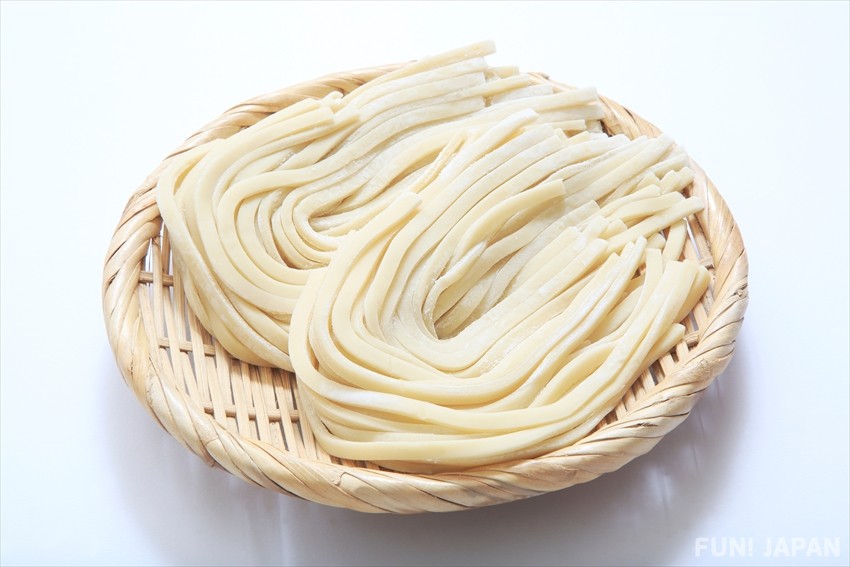
Known for its square shape and especially chewy texture, Sanuki udon hail from Kagawa prefecture in Shikoku. Sanuki was the region’s historical name and the history of udon production is said to date back over a thousand years to the return of Kukai, a local monk, from a trip to China where he first tried udon. There are now over 600 udon stores in the region and thanks to their perfect wheat-growing climate, the noodles are stretchy and smooth every time.
Inaniwa udon from Akita
Slightly thinner than regular udon, Inaniwa udon are another of Japan’s most famous examples. Inaniwa is a small area in Akita prefecture, and the area’s udon history is said to date back to the 17th century, when a local man perfected the art of drying and repeated kneading to create thinner noodles. These skills were passed on and today the region’s reputation for their unique udon is strong. After drying and being kneaded, they are left to age before more kneading, a lengthy process that adds to the smooth texture. The added air bubbles that come from so much hand-kneading also mean they can last longer than other udon as well as being chewier.
Mizusawa Udon from Gunma
Perfected in Gunma prefecture, Mizusawa udon are known for their almost translucent white appearance and smooth texture. The noodle’s history dates back around 400 years and was originally given to visitors of Mizusawa Temple in Shibukawa city. Their production is carefully monitored by a dedicated association that ensure any noodles carrying the Mizusawa name are made in the traditional way. This involves a two-day kneading process that follows a secret method as well as the use of locally sourced water from nearby Mount Haruna.
Ise Udon from Mie
A small but significant city in Mie prefecture, Ise is home to a local udon dish known as Ise udon. The dish uses a thick sauce made with dried fish and soy sauce, topped with green onions and bonito flakes.
Hoto Udon from Yamanashi
Flatter and similar in appearance to fettuccine pasta, Yamanashi’s Hoto udon are cooked along with seasonal vegetables in a hearty miso soup. The dish is a perfect winter-warmer and is eaten in winter, although you can try it whenever you visit.
